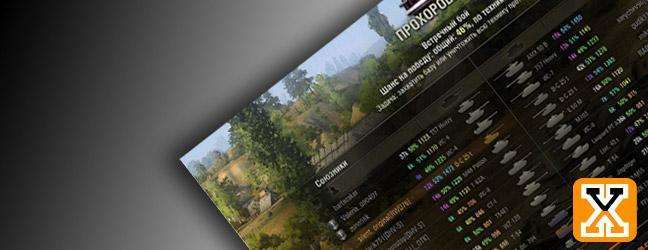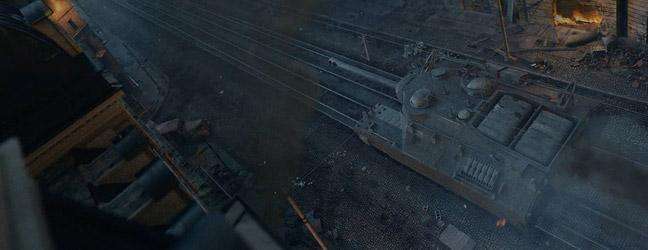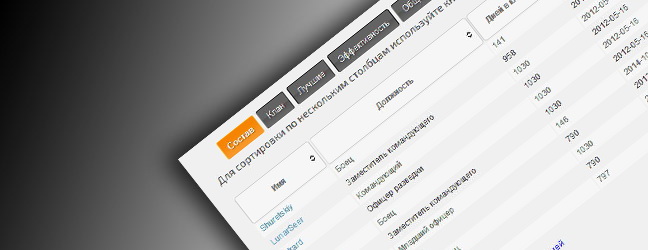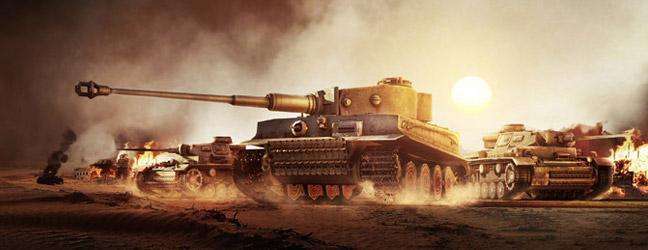Your Ideal Tank Contest
Дата: 20.03.2010 09:10:33
MrVic: US/UK M90-C
Nicknamed “Colossus”

Origins
Dieter Hartmut was the mastermind behind the M90-C. Born in 1901 and having lived through WW1 he had a
grim outlook on the world. In his childhood he was home schooled by his father. Being
that his father was an engineer tasked with developing weapons of war for Germany. He had little time for his son
in childhood years. As Dieter got older his father would take him to work with him and continued to teach his
some the family business so to speak. In Feb 1936 his father ran afoul of the Gestapo. Details never came
out but Dieter returned home from work to his mother and father dead in his family home. Dieter left Germany that
night, fleeing for Britain.
Upon arriving in Britain with the brewing of possible war Britain refused him asylum. Weighing his options he
decided the farther he got from conflict the better. Dieter left for the U.S. the following day. After he arrived in the
U.S. he sought out the only work he knew, mechanical engineering. He quickly caught the eye of the Dept of Defense
mainly due to being a German refugee of sorts and his background with German military designs and technology. They
approached him with an offer to work for the Government. Dieter accepted and began laying out everything he had worked
on leading up to the day he fled Germany. He was part of a engineering group exploring heavy armored vehicles and tank development.
With his rough sketches of what he had worked on being combed over by the Dept of Defense they struck upon an offer, help the U.S.
develop weapons to combat the Germans if things boil over in Europe and threaten the U.S. He agreed as long as he was permitted to
build as he saw fit. They agreed and he began work with a small group of engineers on what would become the M90-C.
Dieters design moved quickly at first, the rough work had been done before he left Germany. He had always thought
if you make a weapon seem indestructible and it have the capability destroy all that stands before it. Then you not
only have a the strength to win any fight, but a immensely powerful psychological weapon. Fear would be his tanks
greatest armor of all. With heavy armor protection. He had designed a 82 ton Heavy Tank that could withstand an
immense amount of enemy fire. With side armor skirting, thick skinned, and dual road wheels he thought he had all
the protection the M90-C would ever need.
Mobility was going to be his greatest hurdle. Not only speed and turning but turret rotation and elevation needed to
be addressed. He realized the only way to efficiently move a beast of this size was hydraulics. Dietier designed a
simple control scheme for turret operations but he had yet to find a power plant capable of bringing his tank to life.
After approaching many manufactures about engines they had developed he stumbled upon Ford’s V8 GAA. While the engine
was being primed for use in the M4 Sherman designs currently, he thought he had found what he was after. In the end he
met with disappointment as it was underpowered for his needs. Before leaving he was shown designs for the V12 GAA that
was the original design of the V8 GAA. Ford had designed the V12 version for aircraft engines in hopes of supplying it
to the navy for aircraft, but the production contract was given to Allison’s 1710 cid V12. So with aircraft moving towards
radial engines ford cut 4 cylinders off their original design and redesigned if for use in tanks most notably the Sherman.
Ford’s loss became Dieters miracle, with the production line and tooling in place to produce the V12 GAA he persuaded them
to run some with hopes of giving them a larger contract for the engines once his design was accepted. Dieter now had the
power he needed. Being aircraft engines designed as light as weight as possible it would work out nicely. He decided upon
using two engines for the extra power to spare. This also enabled some redundancy incase one engine failed or was lost.
The second engine could power the tank tho at a reduced capacity. By designing each engine into separate compartments with
two isolated fuel tanks he gained a lot of durability as well. The horsepower gave the M90-C a rather fast turret rotation
speed of 17sec even with the immense weight of the turret.
The final stage of his design was armaments. He easily adapted the Browning .30 cal to a coaxial and hull mounted
machine gun positions for infantry defense and added an option Browning .50cal on the turret to be used as anti-air or infantry defense.
Dieter then focused on the main gun, trying to find something in line with the early designs of the high velocity German gun
that were being worked produced at the design level when he fled Germany. He quickly found what he was after in the
90mm M3 Anti-Aircraft gun. With a minor redesign of the powder charge of the standard round and reinforcing the barrel with
stronger and higher heat resistance metals, he had his weapon. The 90mm A2 “Super”. With the added power he could achieve a 1012m/s muzzle
velocity with the 90mm M3 HE/AP round.
Dieters design was accepted though with a small testing production order. International took the contract and produced 15 standard
models to be tested prior to final approval. The M90-C performed well in the series of review tests, even though a unforeseen hydraulic issue
in the secondary engine was found mid testing. The M90-C still finished the test that day due to the redundancy Dieter had designed.
A few minor changes were made and the Defense Dept accepted it but with a limited production run only. As many were skeptical of
the material cost and usage of such a weapon, they decided to wait and see if this would or would not be the weapon they needed.
The first true combat occurred in May 1940, two prototypes were rushed to Europe after Poland was invaded, with the hopes of a good performance test.
Germany soon turned towards France. The 2 prototypes only arrived in time for the defense of Dunkirk. Both M90-C’s took a heavy toll on the German
forces before being overwhelmed. One was lost to the crew abandoning the tank and detonating the remaining ordnance. The
other was presumed captured or loss no one was sure. Though Germany later produced tanks of a similar weight class and concepts, it was never proven
if the captured tank was the reason or if they had followed through on their own designs. When the U.S. entered the war and the M90-C
being combat proven now, the orders and production had greatly increased. The fear of the mighty M90-C was unquestionable to the
enemies who were foolish enough to stand their ground in the face of such a beast!
GENERAL DATA
Formal Designation...................M90-C "Colossus"
Manufacturer(s)......................International
Production Quantity...................15 (350 ordered)
Production Period.......................1938- ?
Type.........................................Heavy Tank
Crew...........................................5
Length /hull (m)...........................10.4 (34' 2")
Width /with skirts (m).................3.86 (12' 8")
Combat Weight (kg).....................75250 (82 Tons)
Height (m)................................3.08 (10' 1")
Barrel Overhang (m)......................3 (9' 10")
Radio Equipment............................No. 19 & No. 38
FIREPOWER
Primary Armament.............................90mm A2 (super)
Ammunition Carried............................75
Traverse (degrees).............................Hydraulic (360°)
Traverse speed (360°).......................17 Sec
Elevation (degrees)......................... -9.4° to +15°
Secondary Armament................2 × Browning .30 (Coax, Hull) 1x Browning .50 cal (optional)
Ammunition Carried........................5850 (.30 cal) 450 (.50 cal)
Sight.............................................TZF5a
MOBILITY CHARACTERISTICS
Engine Make & Model.............................2x Ford GAA V12
Horsepower (max.)................................2x 765 HP@2600rpm
Power/Weight Ratio...............................18.0 hp/t
Gearbox.............................................8 forward, 4 reverse
Fuel..................................................Gasoline (Petrol)
Range on/off road (km).........................170/120
Mileage (liters/100km)..........................601 on/863 off road
Fuel Capacity (liters)............................1036
Speed on/off road................................42/22 km/h
Track Links.......................................96/track
Track Width.......................................80 cm
Track Ground Contact..........................413 cm
Ground Pressure................................13.7 psi
Ground Clearance (m)..........................0.49 (1' 7")
Turning Radius (m).............................4.8 (15' 9")
Gradient (degrees).............................35°
Vertical Obstacle (m)...........................0.85 (2' 10")
Fording (m).......................................1.63 (5' 4")
Trench Crossing (m)...........................3 (9' 10")
ARMOR PROTECTION
Armor Detail...............Front...........................Side......................Rear.......................Top/Bottom
Upper Hull..................150mm@35°...............105mm@60°............80mm@60°...........40mm@0°
Lower Hull..................105mm@35°...............105mm@90°............80mm@60°..............NA
Turret.........................180mm@81°...............105mm@69°...........105mm@90°..........40mm@0°
Mantlet......................100mm..........................NA...........................NA........................NA
Designer notes:
Started out with a basic heavy tank that utilized some of the favorite ideas in a lot of WW2 tank designs. The main thing I wanted to strive for was a
heavy tank capable of fast turret rotation. Also I wanted to dabble with a Allied tank and finding a power plant to support such a tank I knew was going to
be the hard part. Reading about I ran into the V12 that I never knew existed let alone was ready for production to start any day when it was abandoned.
With light weight and reasonable size I was set. more to come...
more to come...
Nicknamed “Colossus”

Origins
Dieter Hartmut was the mastermind behind the M90-C. Born in 1901 and having lived through WW1 he had a
grim outlook on the world. In his childhood he was home schooled by his father. Being
that his father was an engineer tasked with developing weapons of war for Germany. He had little time for his son
in childhood years. As Dieter got older his father would take him to work with him and continued to teach his
some the family business so to speak. In Feb 1936 his father ran afoul of the Gestapo. Details never came
out but Dieter returned home from work to his mother and father dead in his family home. Dieter left Germany that
night, fleeing for Britain.
Upon arriving in Britain with the brewing of possible war Britain refused him asylum. Weighing his options he
decided the farther he got from conflict the better. Dieter left for the U.S. the following day. After he arrived in the
U.S. he sought out the only work he knew, mechanical engineering. He quickly caught the eye of the Dept of Defense
mainly due to being a German refugee of sorts and his background with German military designs and technology. They
approached him with an offer to work for the Government. Dieter accepted and began laying out everything he had worked
on leading up to the day he fled Germany. He was part of a engineering group exploring heavy armored vehicles and tank development.
With his rough sketches of what he had worked on being combed over by the Dept of Defense they struck upon an offer, help the U.S.
develop weapons to combat the Germans if things boil over in Europe and threaten the U.S. He agreed as long as he was permitted to
build as he saw fit. They agreed and he began work with a small group of engineers on what would become the M90-C.
Dieters design moved quickly at first, the rough work had been done before he left Germany. He had always thought
if you make a weapon seem indestructible and it have the capability destroy all that stands before it. Then you not
only have a the strength to win any fight, but a immensely powerful psychological weapon. Fear would be his tanks
greatest armor of all. With heavy armor protection. He had designed a 82 ton Heavy Tank that could withstand an
immense amount of enemy fire. With side armor skirting, thick skinned, and dual road wheels he thought he had all
the protection the M90-C would ever need.
Mobility was going to be his greatest hurdle. Not only speed and turning but turret rotation and elevation needed to
be addressed. He realized the only way to efficiently move a beast of this size was hydraulics. Dietier designed a
simple control scheme for turret operations but he had yet to find a power plant capable of bringing his tank to life.
After approaching many manufactures about engines they had developed he stumbled upon Ford’s V8 GAA. While the engine
was being primed for use in the M4 Sherman designs currently, he thought he had found what he was after. In the end he
met with disappointment as it was underpowered for his needs. Before leaving he was shown designs for the V12 GAA that
was the original design of the V8 GAA. Ford had designed the V12 version for aircraft engines in hopes of supplying it
to the navy for aircraft, but the production contract was given to Allison’s 1710 cid V12. So with aircraft moving towards
radial engines ford cut 4 cylinders off their original design and redesigned if for use in tanks most notably the Sherman.
Ford’s loss became Dieters miracle, with the production line and tooling in place to produce the V12 GAA he persuaded them
to run some with hopes of giving them a larger contract for the engines once his design was accepted. Dieter now had the
power he needed. Being aircraft engines designed as light as weight as possible it would work out nicely. He decided upon
using two engines for the extra power to spare. This also enabled some redundancy incase one engine failed or was lost.
The second engine could power the tank tho at a reduced capacity. By designing each engine into separate compartments with
two isolated fuel tanks he gained a lot of durability as well. The horsepower gave the M90-C a rather fast turret rotation
speed of 17sec even with the immense weight of the turret.
The final stage of his design was armaments. He easily adapted the Browning .30 cal to a coaxial and hull mounted
machine gun positions for infantry defense and added an option Browning .50cal on the turret to be used as anti-air or infantry defense.
Dieter then focused on the main gun, trying to find something in line with the early designs of the high velocity German gun
that were being worked produced at the design level when he fled Germany. He quickly found what he was after in the
90mm M3 Anti-Aircraft gun. With a minor redesign of the powder charge of the standard round and reinforcing the barrel with
stronger and higher heat resistance metals, he had his weapon. The 90mm A2 “Super”. With the added power he could achieve a 1012m/s muzzle
velocity with the 90mm M3 HE/AP round.
Dieters design was accepted though with a small testing production order. International took the contract and produced 15 standard
models to be tested prior to final approval. The M90-C performed well in the series of review tests, even though a unforeseen hydraulic issue
in the secondary engine was found mid testing. The M90-C still finished the test that day due to the redundancy Dieter had designed.
A few minor changes were made and the Defense Dept accepted it but with a limited production run only. As many were skeptical of
the material cost and usage of such a weapon, they decided to wait and see if this would or would not be the weapon they needed.
The first true combat occurred in May 1940, two prototypes were rushed to Europe after Poland was invaded, with the hopes of a good performance test.
Germany soon turned towards France. The 2 prototypes only arrived in time for the defense of Dunkirk. Both M90-C’s took a heavy toll on the German
forces before being overwhelmed. One was lost to the crew abandoning the tank and detonating the remaining ordnance. The
other was presumed captured or loss no one was sure. Though Germany later produced tanks of a similar weight class and concepts, it was never proven
if the captured tank was the reason or if they had followed through on their own designs. When the U.S. entered the war and the M90-C
being combat proven now, the orders and production had greatly increased. The fear of the mighty M90-C was unquestionable to the
enemies who were foolish enough to stand their ground in the face of such a beast!
GENERAL DATA
Formal Designation...................M90-C "Colossus"
Manufacturer(s)......................International
Production Quantity...................15 (350 ordered)
Production Period.......................1938- ?
Type.........................................Heavy Tank
Crew...........................................5
Length /hull (m)...........................10.4 (34' 2")
Width /with skirts (m).................3.86 (12' 8")
Combat Weight (kg).....................75250 (82 Tons)
Height (m)................................3.08 (10' 1")
Barrel Overhang (m)......................3 (9' 10")
Radio Equipment............................No. 19 & No. 38
FIREPOWER
Primary Armament.............................90mm A2 (super)
Ammunition Carried............................75
Traverse (degrees).............................Hydraulic (360°)
Traverse speed (360°).......................17 Sec
Elevation (degrees)......................... -9.4° to +15°
Secondary Armament................2 × Browning .30 (Coax, Hull) 1x Browning .50 cal (optional)
Ammunition Carried........................5850 (.30 cal) 450 (.50 cal)
Sight.............................................TZF5a
MOBILITY CHARACTERISTICS
Engine Make & Model.............................2x Ford GAA V12
Horsepower (max.)................................2x 765 HP@2600rpm
Power/Weight Ratio...............................18.0 hp/t
Gearbox.............................................8 forward, 4 reverse
Fuel..................................................Gasoline (Petrol)
Range on/off road (km).........................170/120
Mileage (liters/100km)..........................601 on/863 off road
Fuel Capacity (liters)............................1036
Speed on/off road................................42/22 km/h
Track Links.......................................96/track
Track Width.......................................80 cm
Track Ground Contact..........................413 cm
Ground Pressure................................13.7 psi
Ground Clearance (m)..........................0.49 (1' 7")
Turning Radius (m).............................4.8 (15' 9")
Gradient (degrees).............................35°
Vertical Obstacle (m)...........................0.85 (2' 10")
Fording (m).......................................1.63 (5' 4")
Trench Crossing (m)...........................3 (9' 10")
ARMOR PROTECTION
Armor Detail...............Front...........................Side......................Rear.......................Top/Bottom
Upper Hull..................150mm@35°...............105mm@60°............80mm@60°...........40mm@0°
Lower Hull..................105mm@35°...............105mm@90°............80mm@60°..............NA
Turret.........................180mm@81°...............105mm@69°...........105mm@90°..........40mm@0°
Mantlet......................100mm..........................NA...........................NA........................NA
Designer notes:
Started out with a basic heavy tank that utilized some of the favorite ideas in a lot of WW2 tank designs. The main thing I wanted to strive for was a
heavy tank capable of fast turret rotation. Also I wanted to dabble with a Allied tank and finding a power plant to support such a tank I knew was going to
be the hard part. Reading about I ran into the V12 that I never knew existed let alone was ready for production to start any day when it was abandoned.
With light weight and reasonable size I was set.
 Contests & Competitions\Contests\Your Ideal Tank Contest
Contests & Competitions\Contests\Your Ideal Tank Contest













